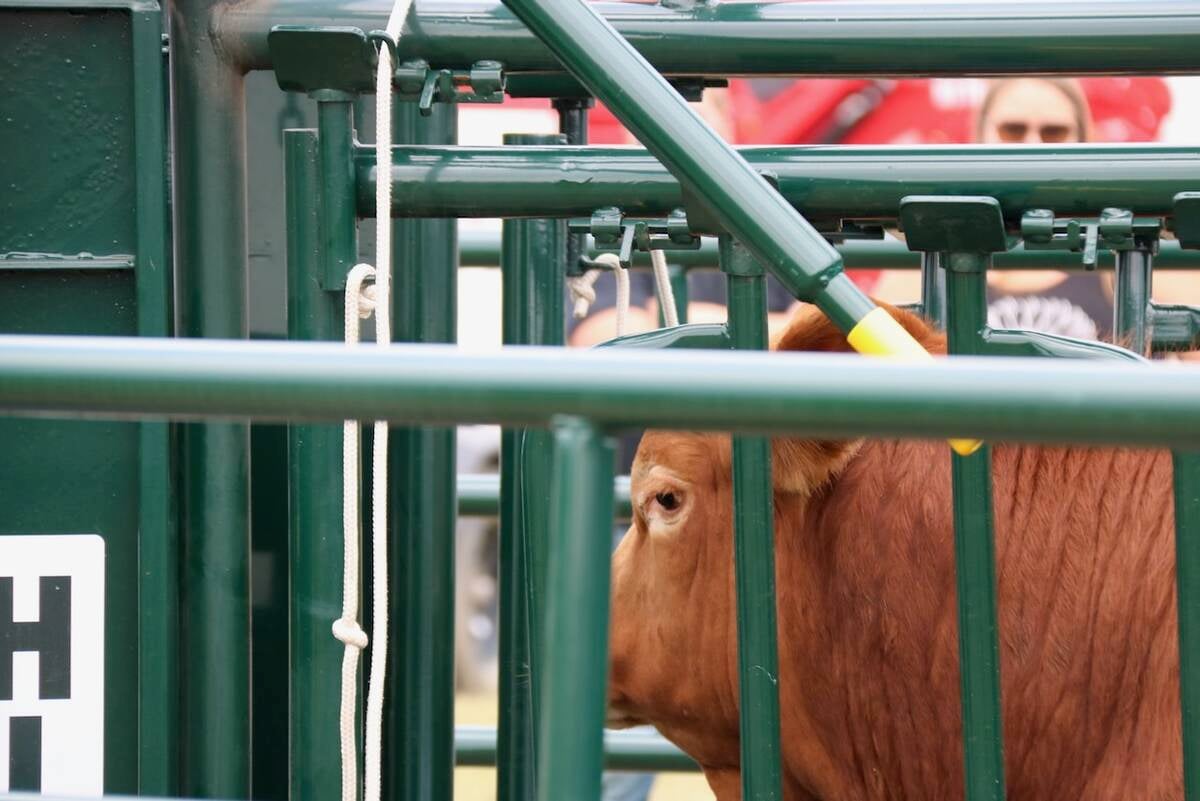It is high time cowboys learned the finer points of needlework, says a large animal veterinarian.
Mishandling cattle vaccines can lead to mangled meat or dead ranchers, said John Campbell, professor at the University of Saskatchewan’s Western College of Veterinary Medicine.
“Micotil is the big one. That’s the one that hit the news in the past couple of years.”
There have been two reported cases of people who have died from accidentally injecting themselves with the antibiotic, which is primarily used to treat respiratory diseases in cattle.
Read Also

Good handling equipment a must on cattle operations
It’s important for the safety of producers and everyone else dealing with their stock that handling equipment is functional and safe.
One of the incidents occurred in 2003 when a 38-year-old Nebraska cattle producer, who was attempting to treat a Red Angus heifer, was knocked down by a pregnant Longhorn cow in an adjacent pen that charged a gate. The rancher fell on top of an uncapped needle contained in his pocket.
He managed to stumble a few metres to a phone and called his wife for help but died later in the emergency room.
There is a lesson in that tragic story for all cattle people, Campbell told producers attending the fifth annual Stock Person’s School, organized by the Farm Animal Council of Saskatchewan.
The best piece of advice he could offer producers who are forced to work with the deadly drug is never carry a loaded syringe in their pocket or mouth.
“It’s a recipe for disaster if that’s Micotil in your pocket. Don’t do it,” Campbell warned.
Other rules of thumb include keeping a cap on the needle, only injecting properly restrained animals, not reusing Micotil syringes and needles, avoiding automatic syringes and keeping the drug away from children.
Producers who do inject themselves are advised to take the product label with them to the hospital. It tells doctors that while the patient may be displaying symptoms of a heart attack, cardiac drugs might make matters worse.
Campbell said an injection of less than one cc of the antibiotic will likely result in nothing more serious than local swelling.
“I’ve probably done that myself,” he said.
Producers should also exercise caution when handling topical insecticides such as Spotton, Neguvon, Cylence and Tiguvon. Many of those products have organophosphates that can target enzymes in the nervous system.
To avoid contact with the product, producers should wear gloves and protective clothing and eyewear.
“If you get it splashed on your skin you can taste it in your mouth. It’s gross,” Campbell said.
It’s a good idea to wash thoroughly with soap and water after handling insecticides.
Other pour-ons such as Ivomec, Cydectin, Megamectin and Dectomax are much less toxic to humans.
While Micotil may be the most deadly drug, there are far more numerous reports of people injecting themselves with Xylazine, a prescription tranquilizer used for cattle and horses. The sedative can cause total respiratory failure in humans.
Women and asthmatics should avoid Lutalyse, a prostaglandin used to induce abortions and calving in cows. It can also cause abortion or spontaneous labour in pregnant women or bronchospasms in asthmatics.
Producers should be careful when using penicillin as well. “There are a lot of people extremely allergic to penicillin,” Campbell said.
Some experts believe 75 percent of all drug reactions may be due to penicillin and the type used for cattle is no different than the drug used for people.
Campbell also talked about the other side of the needle, showing a graphic video of how mishandled injections can lead to abscesses, scars and other types of meat damage that account for an estimated $10 per head loss at slaughter.
He reiterated concepts that have already been drilled into the heads of most cattle producers, such as using the subcutaneous route whenever possible and giving all intramuscular injections in the neck area.
He told producers to change their needles every 10 to 25 animals, to watch for burrs, bends or broken needles, to use 16 gauge needles for most applications and to use <00BD> inch to <00BE> inch long needles for subcutaneous injections.
“A lot of people use one inch needles all the time. That’s way too long for subQ,” Campbell said.
The video presentation of Campbell showing carcass damage caused by poorly handled injections struck a chord with Jarret Nadau, a pasture rider from Outlook, Sask., who attended the conference.
“That was pretty interesting when they cut them critters open to see what’s there. I had heard about it but I had never actually seen what kind of a mess it does leave,” he said.
Don Szatkowski, manager of the Prairie Farm Rehabilitation Administration’s pasture in Semans, Sask., said the first part of the presentation provided a good reminder of what could happen “if a guy does get sloppy.”
However, he too felt the video was the most gripping part of Campbell’s lecture, driving home the point that producers need to get on board with the industry’s quality assurance programs.
“If we want to market a quality product we have to wake up to these sort of issues. We’ve got to see things from a consumer’s point of view.”















